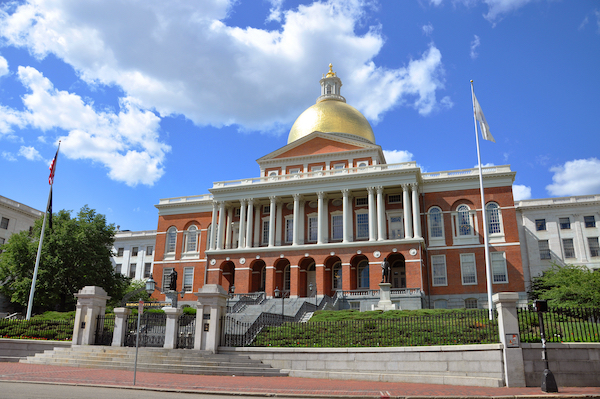Last November, MassINC released a report outlining emerging threats to the Commonwealth’s democratic institutions. The challenges the report captured included a long-term decline in competitive elections and increasingly unbalanced representation by gender, race and ethnicity, and party affiliation. Below we update figures from the 2019 report with results from this fall’s contests.
In summary, electoral competitiveness remains at an all-time low and people of color continue to be underrepresented by similar margins. Republicans have lost voice. While Massachusetts does appear to be making progress toward gender parity, on balance, we have not made gains tackling these systemic issues. This raises questions about how the legislature accesses the diversity of perspective required to counter increasingly complex challenges.
Massachusetts added female legislators in 2018 and again 2020.
The 200-member Massachusetts state legislature still needs 42 more women to reach gender parity, but this is the one area where trends appear to be heading in the right direction. When the 2021-2022 legislature is seated next year, 31 percent of its members will be female. The 5 additional female legislators added this November come on top of a gain of 5 in 2019-2020. This progress over the last two legislative cycles is notable because it contrasts sharply with the previous five elections. For over a decade, the legislature failed to gain momentum toward gender parity and seemed perpetually stuck at around 25 percent female (Figure 1).
The number of legislators of color did not increase in 2020.
In the 2019-2020 session, the Massachusetts legislature had 26 members of color according to figures from the National Conference of State Legislatures. Based on our biographical research, it appears that the legislature will continue to have just 26 members of color during the 2021-2022 session.
Massachusetts has 28 districts in which people of color makeup a majority of the population (24 in the House and 4 in the Senate). During the 2019-2020 session, people of color represented 11 of these districts. In this fall’s elections, people of color won 12. However, this gain of one was offset elsewhere.
People of color now makeup 29 percent of Massachusetts’ population. In comparison, just 13 percent of state legislators are people of color. In order to achieve parity, the legislature needs an additional 31 members of color.
The long steady decline in electoral competitiveness continues.
For the past several cycles, Massachusetts has consistently ranked last or nearly last on measures of electoral competitiveness for state legislatures. COVID-19 certainly did not help matters this time around.
With voters having more than one choice on the ballot for only about one-quarter (26 percent) of seats, November’s general election was the least competitive of any since at least 1970 (Figure 2).
After slight increases in 2016 and 2018, the long-term decline in competitive elections in the state’s Democratic primaries resumed in 2020; only one out five seats had a competitive Democratic primary this fall (Figure 3). Republican primary voters were even less likely to have a choice; only 6 of the 200 seats (3 percent) had more than one Republican candidate on the primary ballot in September.
As we noted in the MassForward report, evidence suggests consistent lack of electoral competition is harmful. In districts that go long periods without competitive races, citizens are less likely to know where their elected leaders stand on the issues and they are more likely to feel government is unresponsive to their needs. Over time, voters in these districts disengage and undisciplined policymaking leads to measurable economic losses for their communities.
The Republican party will have an even lighter presence in the 2021-2022 session.
Republicans held 35 seats during the 2019-2020 session. With just 3 Senators and 29 Representatives, the minority party will be down to 32 members next year. According to MassINC Polling Group data presented in the MassForward report, approximately 27 percent of Massachusetts voters are registered Republicans or lean toward the Republican party. By this metric, Republicans would need 19 more members in the legislature to proportionately reflect the state’s electorate.
As we emphasized in the MassForward report, lack of party competition is particularly problematic for smaller groups within a population. If the parties do not face competitive pressure to build majority coalitions, they are unlikely to respond as robustly to the unique needs of those with a numerical minority of votes.
Minimal gains in 2020 will make the problems we face post-COVID more difficult to overcome.
Figure 4 tallies the changes in membership required to achieve parity in the legislature for the 2019-2020 session and 2021-2022 session. Except for gender, at least an equal amount of progress remains to be made.
The text of the 2019 MassForward report begins with the central premise for why this issue deserves considerable attention: “To overcome the numerous and increasingly complex challenges the future promises to hold, we need the experience, expertise, insight, and service of all our people.” Since we wrote this passage, the challenges we face have only become more difficult.
